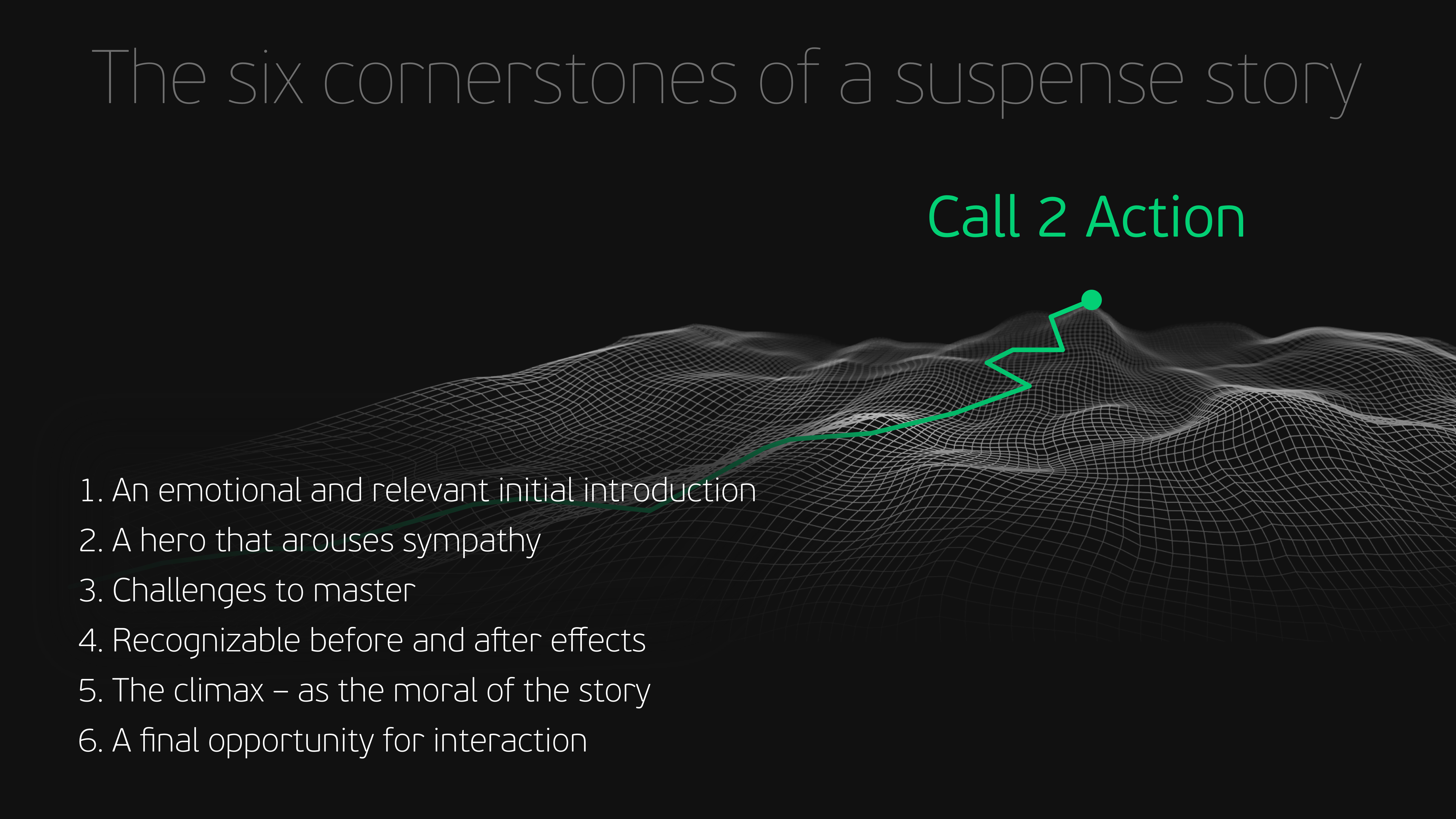

Anyone thinking about digital storytelling needs not only a brilliant idea and optimized UX, but also the necessary consistency to tell the story completely: From the campaign to the landing page and lead generation to nurturing. In this way, the target audience can be surprised again and again at every touchpoint and create curiousity for more...
In today's digital world, text alone hardly moves or touches anyone - but good stories do. Storytelling is the oldest form of exchanging experiences, emotions and information. We tell each other what we have experienced: Problems, experiences, knowledge, values, norms and solutions. But telling stories that inspire and are willingly shared in words, pictures or films is a real challenge.
Regardless of the media and channels where it is told. We must first define what story our product or service should tell and how we can shape it to make it interesting for all target groups and personas.
A suspenseful story helps to get customers excited about your product or service and ideally generates interest, enthusiasm and leads. In B2B marketing in particular, it is not so easy to create such suspenseful arcs. Especially when it comes to complex technical problems or innovative solutions that break new ground. But here too, storytelling follows certain rules of a typical dramaturgy in the form of an arc of suspense in order to attract the attention of a potential customer from the very first moment, maintain it and ultimately encourage them to interact.
Ideally, the product is perceived as emotionally positive from the very first moment and arouses sympathy. This good feeling should be maintained throughout the entire story. This can be achieved through authenticity, visual design, animations, music, text and language, or a successful combination of all these elements.
Now we come to the actual problem that the product solves. This problem-solving can be shown in B2B marketing, for example, as follows:
What the product really achieves as a hero can best be demonstrated by a direct before/after comparison, for example
This is about a real "aha" effect, which should be staged in an eye-catching way to be remembered. In other words, a conclusion that can be applied to the viewer's own situation. This can take the form of an exaggerated visual presentation or a striking summary of a few key benefits and facts.
At the end of a good story, the aim is to make the viewer curious for more and to let them become part of the (success) story themselves. This is achieved through targeted calls to action in order to build a bridge to the actual goal of lead generation. After all, we tell the story for marketing reasons:

If we now adapt our story to the various touchpoints (media, channels and tools) along the user experience (UX), this usually starts with dynamic and static ads that create curiosity on various channels relevant to the target group and lure the user to a landing page. This landing page should then be set up in a narrative structure with the various six suspense phases mentioned above. In order to encourage the user to interact further within the story on the landing page, so-called microcopies are also suitable as additional design elements alongside the usual visual interaction options. Such small but important text sections, such as button labels, error messages or instructions, support user interaction, prevent errors and give the user a feeling of appreciation and well-being.
At the end of the landing page visit, empathy and curiosity should be so great that the user initiates further interactions and becomes a lead, for example via the Hubspot form. It is important to provide critical points at which user engagement reaches its peak with clear call-to-actions and to design these in the web design as a more immersive and emotionally appealing experience.
On the contrary - this is where the real art of digital storytelling in combination with marketing automation begins. Because after lead generation comes the final persuasion phase, which leads to conversion by means of remarketing ads, nurturing emails or personal interactions.
Here it is important to tell the story visually and tonally in a coherent and empathetic way. This means using the same imagery, the same but now slightly more activating text style and a consistent UX that ideally leads directly to a purchase. The whole thing is strategically controlled via Hubspot or another CRM or marketing automation tool that enables continuous tracking, analysis and constant readjustment. If, in the end, the acquired customer becomes a satisfied customer and multiplier who is happy to share the same story, then we have done everything right.
"UX storytelling is not just about functionality, but also about creating an emotional connection with the user by integrating a story into the design to understand the value of the product, differentiate it from the competition and make it more memorable. Seamless online storytelling - from the ad to the landing page and deep dive content to lead generation and conversion - ensures optimal campaign performance and results."
Mike Hauer, Creative Director Digital, SPS MARKETING
Storytelling offers many facets for successful UX design. If you present your product as a hero and turn your users into heroes who experience the visit to the landing page as a journey with a specific goal, you can inspire with an optimal UX. This contains visual surprise elements, a positive and emotional appeal and a simple presentation of complex content that makes the user want to click and scroll.
